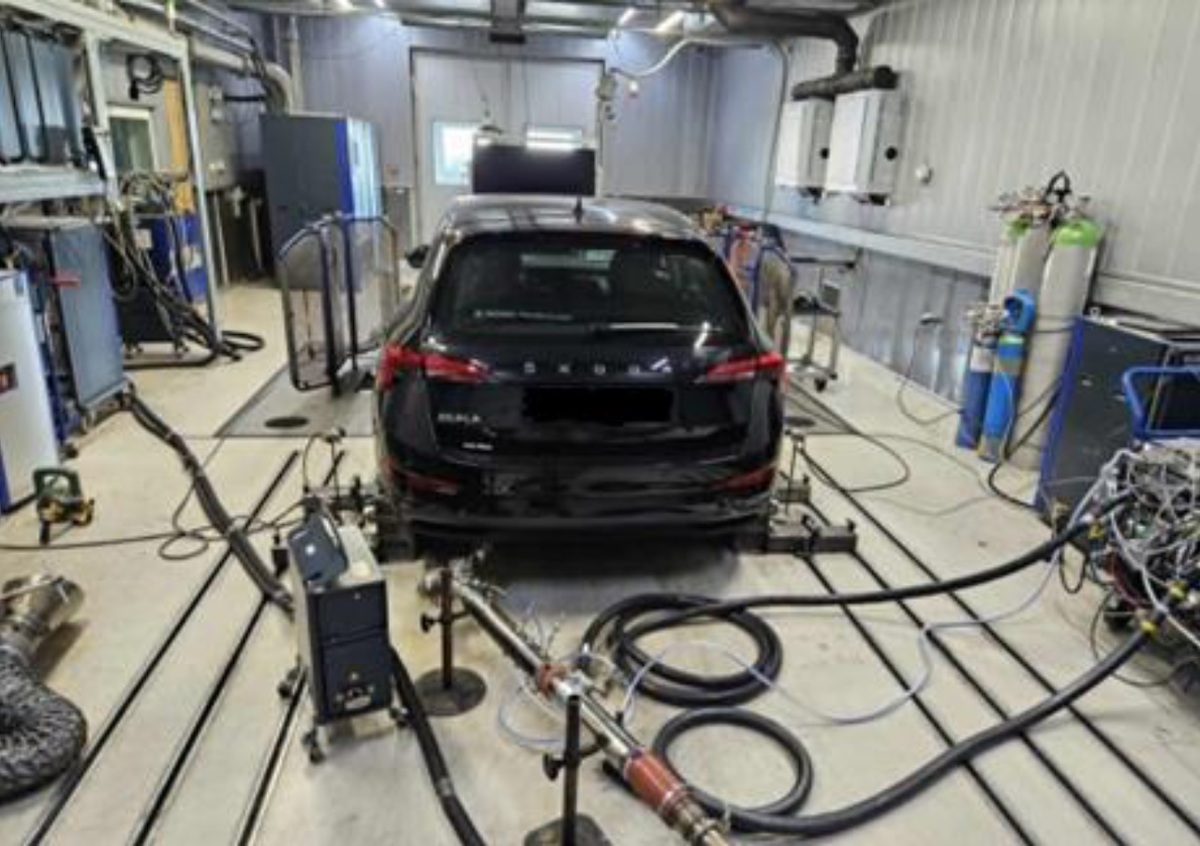Current issue
Online first
Archive
About the Journal
Aims and scope
Publisher and Editorial
Advertising policy
For Authors
Paper review procedures
Procedures protecting authentic authorship of papers
Paper preparation manual
Plagiarism check
Publication ethics
Reviewers
APC
Editorial and Scientific Board
Contact
Reviewers
Results repeatability evaluation of exhaust emission data obtained in laboratory WLTC test conditions using stationary and PEMS analysers
1
Institiute of Powertrains and Aviation, Poznan University of Technology, Poland
Submission date: 2025-06-10
Final revision date: 2025-07-04
Acceptance date: 2025-07-18
Online publication date: 2025-08-02
Publication date: 2025-08-28
Corresponding author
Hubert Wojciechowski
Institiute of Powertrains and Aviation, Poznan University of Technology, Poland
Institiute of Powertrains and Aviation, Poznan University of Technology, Poland
Combustion Engines 2025,202(3), 154-161
KEYWORDS
TOPICS
ABSTRACT
The article presents an assessment of the exhaust emission results repeatability in the WLTC test using two types of measurement systems: stationary laboratory analysers and a PEMS. The tests were conducted in laboratory conditions at BOSMAL Institute of Automotive Research and Development on a passenger car with a gasoline engine on a chassis dynamometer. The assessment included CO₂, CO, NOₓ, THC emissions and the particle number (PN) in each phase of the WLTC test (LOW, MIDDLE, HIGH, EX-HIGH) and in the entire test. The coefficient of variation (CV) was used to assess the repeatability. The results showed greater repeatability of measurements in the case of laboratory analysers, especially for CO₂ and CO. The PEMS system showed greater variability, especially in the dynamic test phases. Despite this, the results validation confirmed the compliance of the PEMS system with regulatory requirements. The article emphasizes the importance of the precision of exhaust emission tests in the context of measurement technologies development and the implementation of more restrictive emission standards, and it indicates CO₂ as the most stable parameter for both systems
REFERENCES (16)
1.
Adamiak B. Ocena mobilnych systemów badania emisji spalin w warunkach laboratoryjnych na hamowni podwoziowej [PhD dissertation]. Poznan University of Technology. Poznan 2024.
2.
Andrych-Zalewska M. Investigation of processes in the WLTC test of a passenger car with a diesel engine. Combustion Engines. 2023;194(3):52-62. https://doi.org/10.19206/CE-16....
3.
Andrych-Zalewska M, Chłopek Z, Merkisz J, Pielecha J. Exhaust emission from a vehicle engine operating in dynamic states and conditions corresponding to real driving. Combustion Engines. 2019;178(3):99-105. https://doi.org/10.19206/CE-20....
4.
Andrych-Zalewska M, Chłopek Z, Merkisz J, Pielecha J. Research on exhaust emissions in dynamic operating states of a combustion engine in a Real Driving Emissions test. Energies. 2021;14(18):5684. https://doi.org/10.3390/en1418...
5.
ArenaEV. Comparison of NEDC, EPA, and WLTP cycles. ArenaEV. 2022. https://www.arenaev.com/compar... (accessed on 13.05.2025).
6.
Bielaczyc P, Klimkiewicz D, Woodburn J, Szczotka A. Exhaust emission testing methods – BOSMAL’s legislative and development emission testing laboratories. Combustion Engines. 2019;178(3):88-98. https://doi.org/10.19206/CE-20....
7.
Chłopek Z, Rostkowski J. Non-repeatability of exhaust emission test results. Combustion Engines. 2015;163(4):92-100.
8.
Encyklopedia Zarządzania. Współczynnik zmienności (in Polish). Mfiles.pl. https://mfiles.pl/pl/index.php... (accessed on 13.05.2025).
9.
European Commission. Commission proposes new Euro 7 standards to reduce pollutant emissions from vehicles and improve air quality. Brussels: European Commission. 2022.
10.
European Commission. UN Regulation No. 168 – Approval of light duty vehicles with regard to real driving emissions. Off J Eur Union. 2024.
11.
European Union. Commission Regulation (EU) 2023/443 of 8 February 2023 amending Regulation (EU) 2017/1151. Off J Eur Union. 2023.
12.
Giechaskiel B, Melas A, Martini G, Dilara P. Overview of vehicle exhaust particle number regulations. Processes. 2021;9(12):2216. https://doi.org/10.3390/pr9122....
13.
Jaworski A, Kuszewski H, Ustrzycki A, Balawender K, Lejda K, Woś P. Analysis of the repeatability of the exhaust pollutants emission research results for cold and hot starts under controlled driving cycle conditions. Environ Sci Pollut R. 2018;25(18):17862-17877. https://doi.org/10.1007/s11356....
14.
Merkisz J, Chłopek Z, Sordyl A. Non-repeatability of the WLTP vehicle test results. Arch Transp. 2024;71(3):25-49. https://doi.org/10.61089/aot20....
15.
Merkisz J, Pielecha J, Radzimirski S. Pragmatyczne podstawy ochrony powietrza atmosferycznego w transporcie drogowym (in Polish). Poznan University of Technology Publishing House. Poznan 2009.
16.
Tomalski P, Tomaszewski E. Metody statystyczne w analizach hydrologicznych środkowej Polski (in Polish). University of Lodz Publishing House. Lodz 2019.
Share
RELATED ARTICLE
We process personal data collected when visiting the website. The function of obtaining information about users and their behavior is carried out by voluntarily entered information in forms and saving cookies in end devices. Data, including cookies, are used to provide services, improve the user experience and to analyze the traffic in accordance with the Privacy policy. Data are also collected and processed by Google Analytics tool (more).
You can change cookies settings in your browser. Restricted use of cookies in the browser configuration may affect some functionalities of the website.
You can change cookies settings in your browser. Restricted use of cookies in the browser configuration may affect some functionalities of the website.



